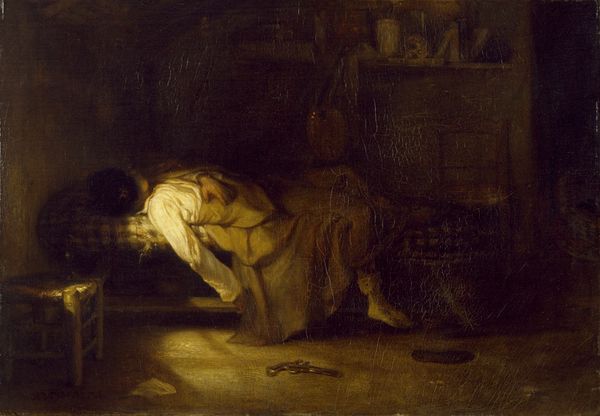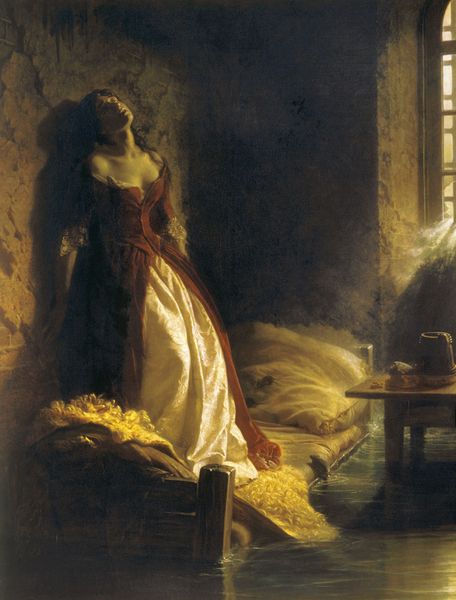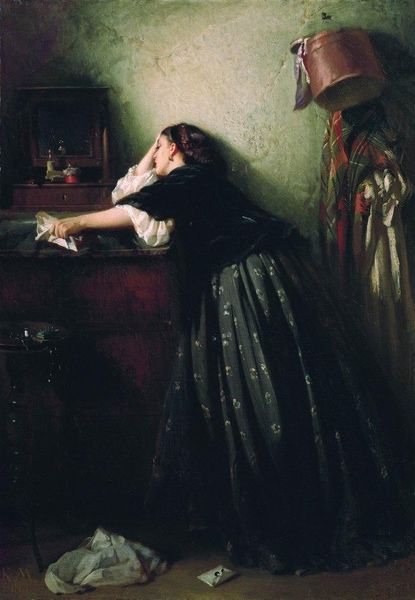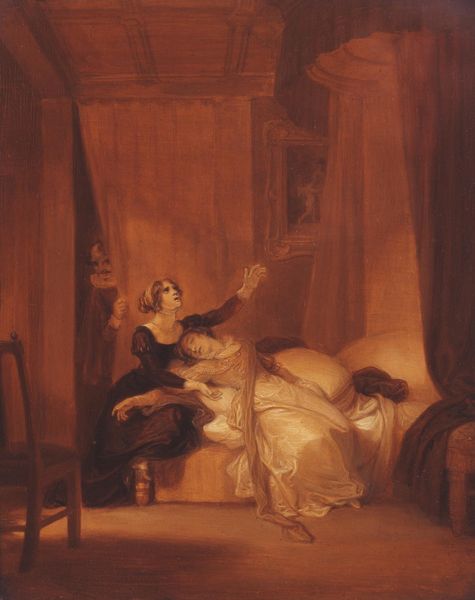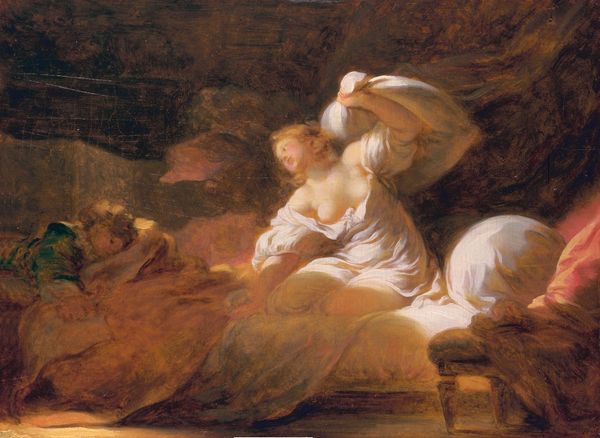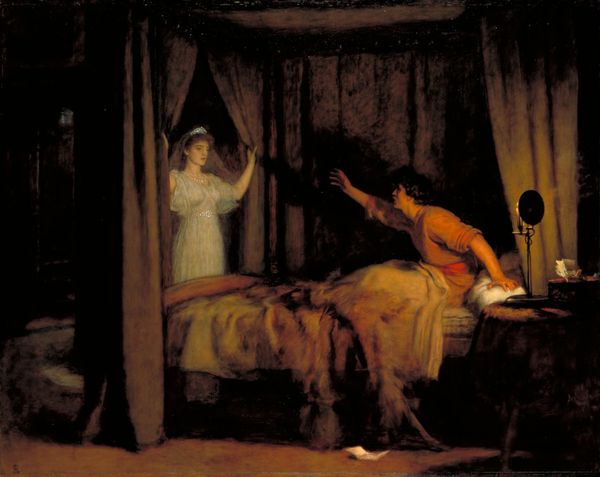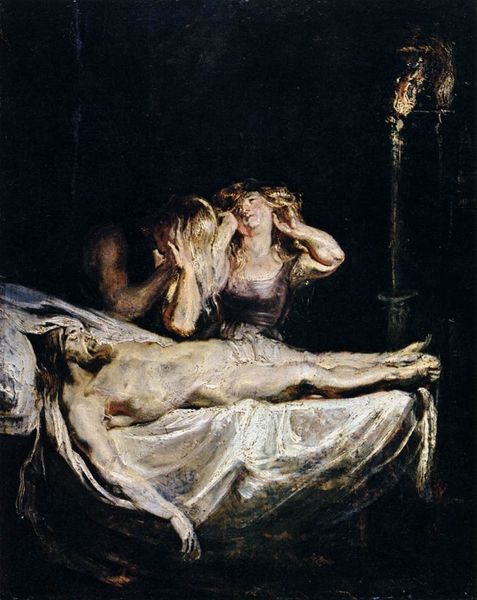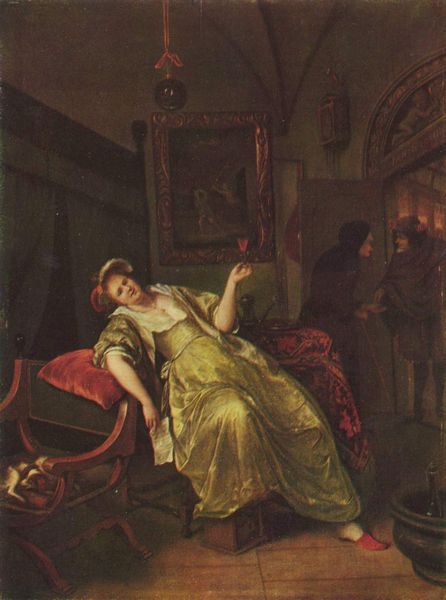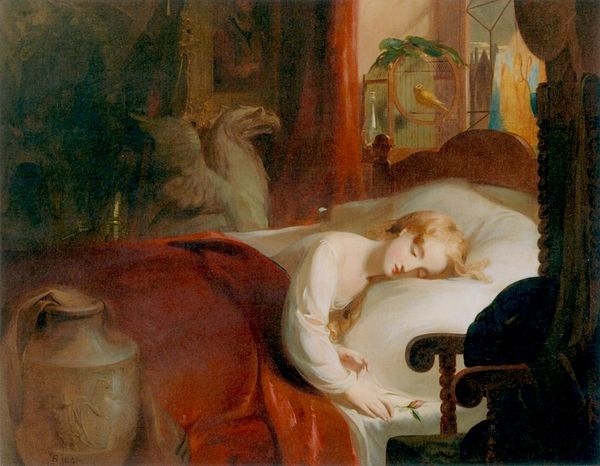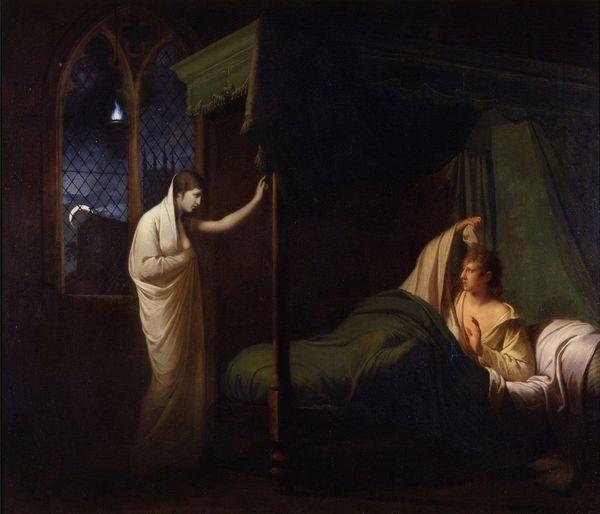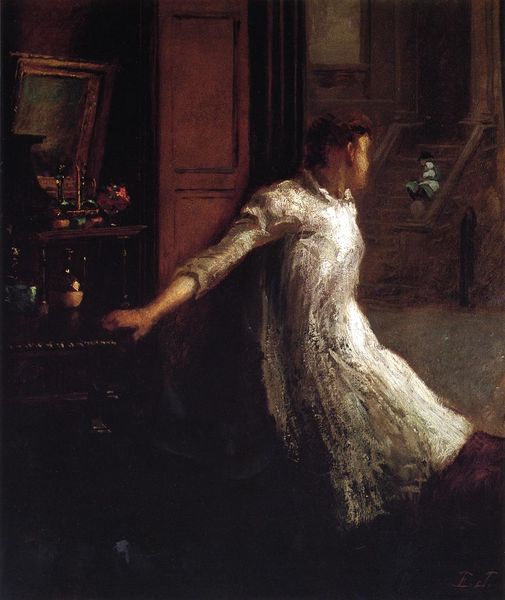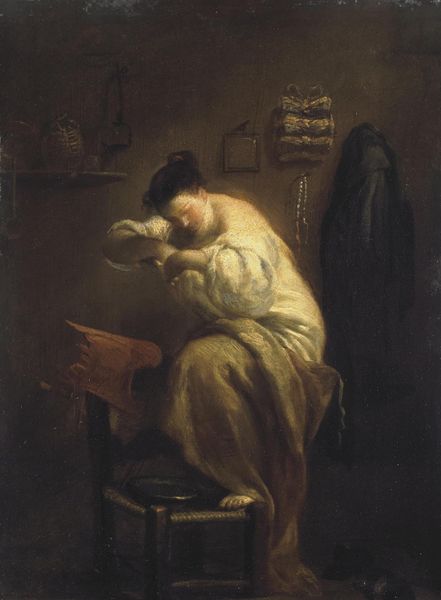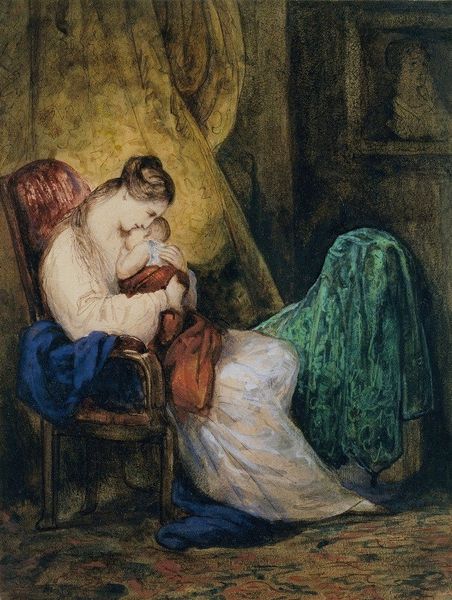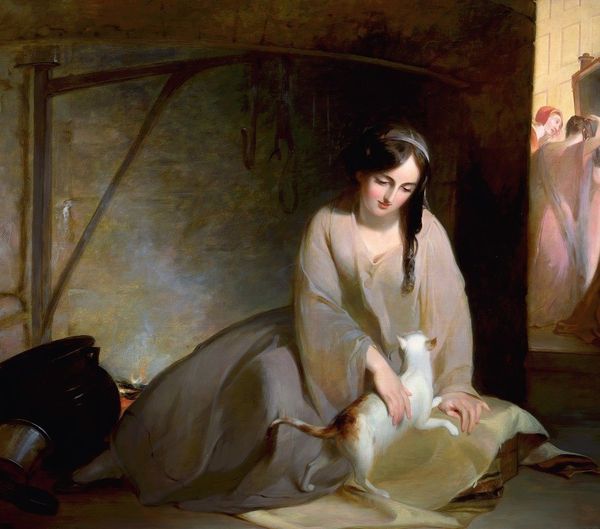
Clarissa Harlowe in the Prison Room of the Sheriff’s Office Possibly 1833
0:00
0:00
Dimensions: support: 610 x 508 mm
Copyright: CC-BY-NC-ND 4.0 DEED, Photo: Tate
Curator: Charles Landseer, born in 1799, painted this poignant scene, "Clarissa Harlowe in the Prison Room of the Sheriff’s Office". It's quite a moving depiction on a moderately sized canvas. Editor: What strikes me immediately is the somber mood, this deep, enveloping darkness. It's not just a room; it's a state of mind. Curator: Absolutely. The single candle and the barred window underscore her isolation. She's caught in a narrative, a tragedy perhaps? I imagine her writing a goodbye letter. Editor: That partially open book, the scattered pages—they’re potent symbols of unraveling. It's a universal image of despair, really, regardless of the specific story. We see the same motifs recurring throughout art history. Curator: I agree. It's a shame we don't know when exactly Landseer created it. I feel a deep empathy for her, a sense of injustice, even. Editor: Yes, her story, whatever it may be, resonates through the ages. Visual language that speaks to our shared human experience. Curator: Indeed, even if the details fade, the emotion remains palpable.
Comments
tate 8 months ago
⋮
http://www.tate.org.uk/art/artworks/landseer-clarissa-harlowe-in-the-prison-room-of-the-sheriffs-office-n00408
Join the conversation
Join millions of artists and users on Artera today and experience the ultimate creative platform.
tate 8 months ago
⋮
Samuel Richardson's novel 'The History of Clarissa Harlowe' was first published in 1747-8. Clarissa, the heroine, is a woman of great integrity. She is wooed by the rake Robert Lovelace. He wants her to live with him out of wedlock and despite her resistance to the proposal, rapes her. Clarissa's continuing denial of him after this transforms her into a tragic heroine who dominates the last scenes of the book. At one point she is imprisoned for debt. Landseer depicts that moment when she is discovered in gaol by Lovelace's friend John Belford. Landseer's choice of subject and his handling of it recalls William Hogarth's much earlier 'modern moral subjects', which influenced many nineteenth-century genre painters. Gallery label, August 2004
